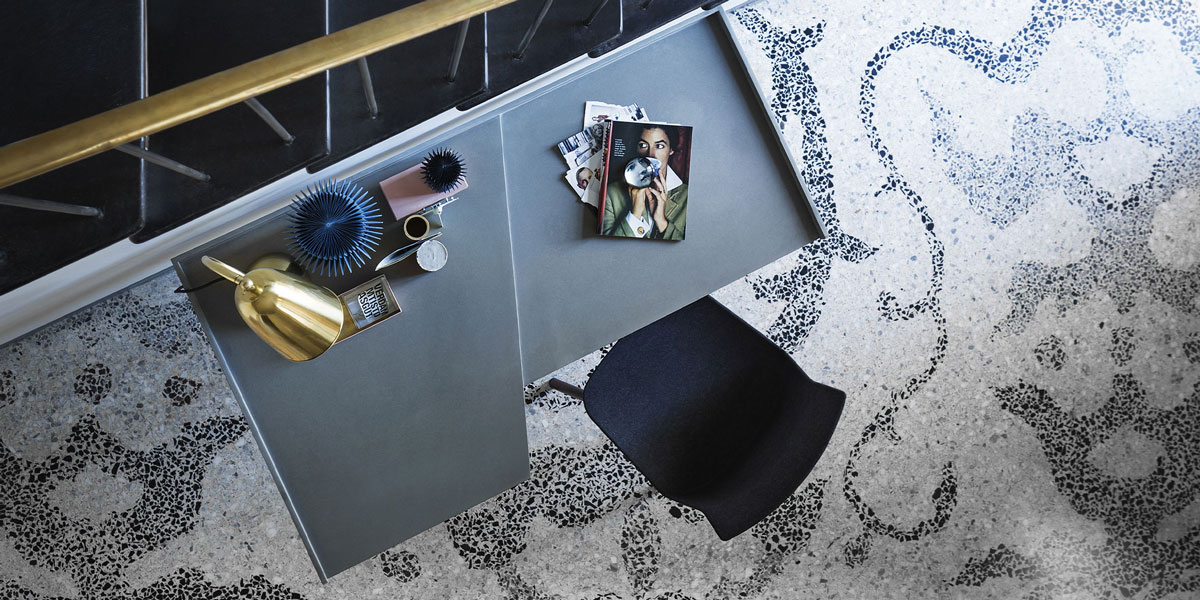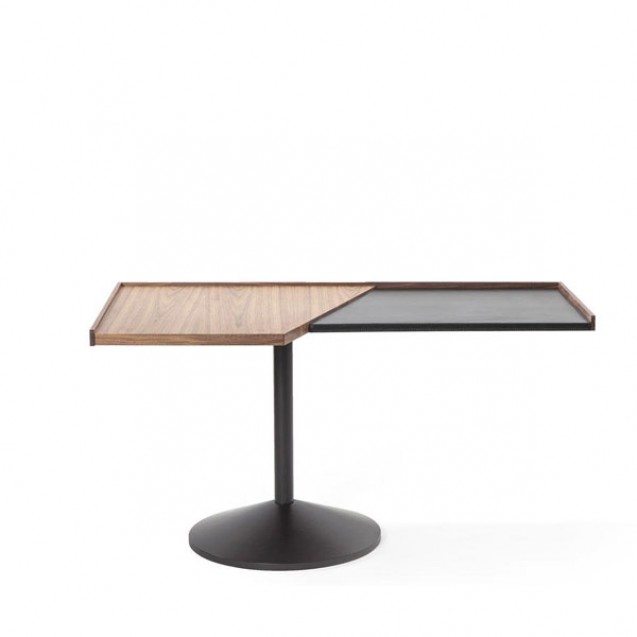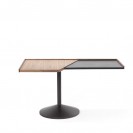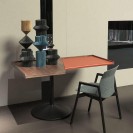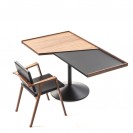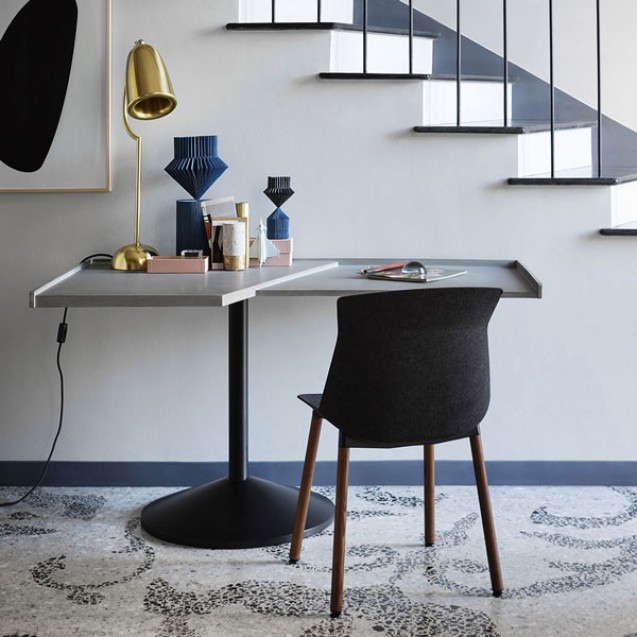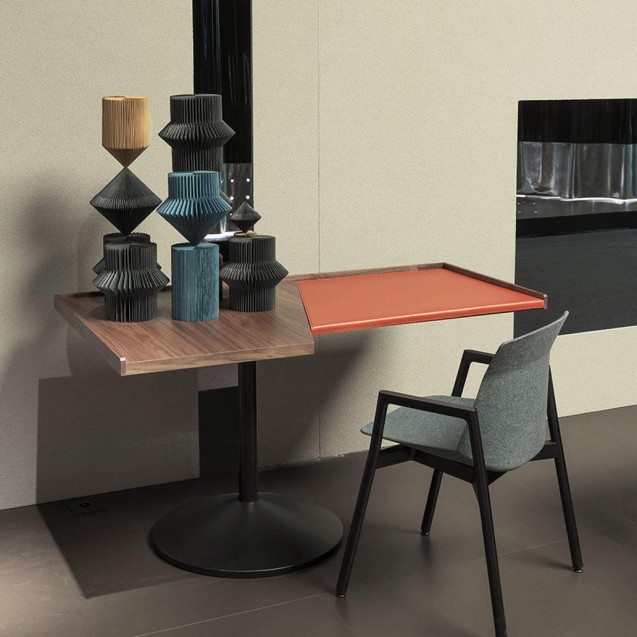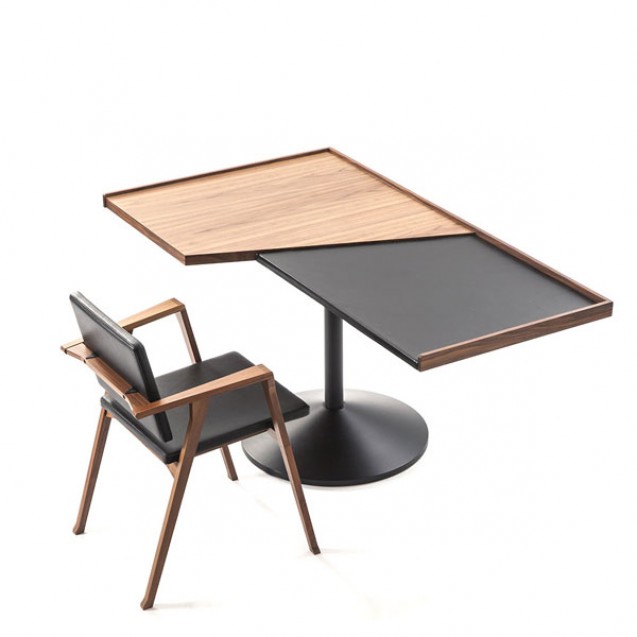840 Stadera
This table/writing desk,
designed by Franco Albini consists of two trapezoidal planes, one smaller than
the other, on a single steel support. This balancing act is characterised by
the material richness of the planes, which are available in three types of
wood, and natural cement, their shape being delineated by a frame. In each
version of this piece, one plane is thicker than the other, the higher of the
two available with a leather top. This accentuates the tactile and visual qualities
of the piece. While the single-leg support might suggest a lack of balance,
equilibrium is established using the principle of the Roman balance (stradera,
in Italian), a form of weighing scale consisting of a beam with two arms of
different lengths, and a counterweight that can be displaced along the
graduated, longer arm.
| About Designer | |
|---|---|
Franco Albini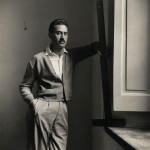 |
He was a major figure in the Rationalist Movement,
excelling in architectural, furniture, industrial and museum design. After
receiving a degree in architecture from the Politecnico di Milano in 1929, he
worked with the Ponti and Lancia design studios. His work for the magazine
Casabella also played a key part in his development, marking his conversion to
the Rationalist Movement and his becoming its spokesman on the Italian cultural
scene. When he set up
his own practice in Milan in 1931, he took on the challenge of workers’ housing
and continued in this vein after the war, thanks to the opportunities offered
by the reconstruction projects he worked on with Franca Helg from 1952. During the
1940’s, Albini expanded his collaboration with Cassina, which started with
chair designs that paved the way for his signature style. He also pursued his
furniture designs with other firms, such as Poggi. Milan and
Genoa form the geographical axis where Albini left his strongest imprint. For
the Lombard capital, he planned the development of the stations on Line 1 of
the city’s subway system (1962/63), in collaboration with graphic designer Bob
Noorda. His numerous urban development and building projects for Genoa include
the Palazzo Bianco (1949/51), Palazzo Rosso (1952/62), and Tesoro di San
Lorenzo (1952/56) museums. Franco Albini
was the recipient of many honors in recognition of the importance of his
cultural contributions. Among others,
he is a member of the INU, the CIAM, the AccademiaLigustica di Genova, MOMA in
New York, the ADI, the Accademico di S. Luca, the Fondazione Pagano and the
London Royal Society of Arts. He also
received numerous prizes, including the La Rinascente-Compasso d’Oro for the
design of the Luisa chair (1955), the Bronze Medal from the Parson School in
New York (1956) for his contribution to industrial design, the Olivetti Award
for Architecture (1957), the Gran PremioNazionale La Rinascente-Compasso d’Oro
(1958), the La Rinascente-Compasso d’Oro Award for the Milan Line 1 Subway
project (1964), and the Royal Designer for Industry title awarded by the London
Royal Society of Arts (1971). In all his
work, from home furnishings to industrial and museum design projects, Franco Albini
always instilled a logical consistency, an extreme purity of expression and
exceptional ethical and historical integrity.
The
architectural and design work of Franco Albini represents a keystone of the
Italian architectonic culture from the early 20th century through his intense
activity revolving around a creative and rigorous approach to composition and
building that expresses a particularly high degree of estheticism. |
